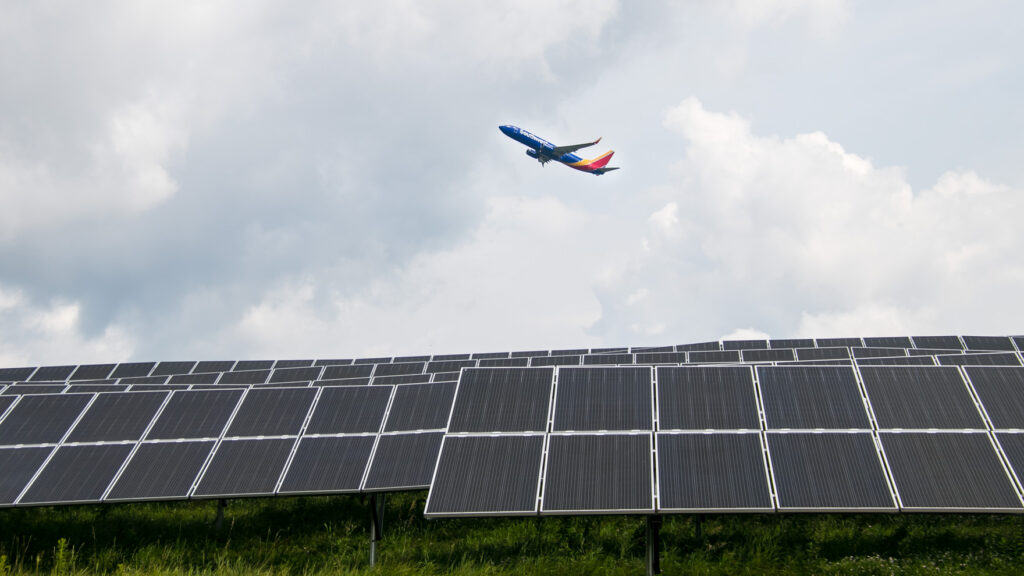One year ago Pittsburgh International Airport became the first major US airport to be powered entirely by a microgrid using natural gas and solar energy, and the results are in. Carbon dioxide emissions have been cut by about 8.2 million pounds per year, said Tom Woodrow, Pittsburgh Airport’s senior vice president of engineering and infrastructure intelligence. And it is estimated that the airport saved $1 million in energy costs.
The 20 MW microgrid powers the entire airport and hotel, but it remains connected to the grid as an option for emergency or backup power if needed.
“We’ve lowered our energy costs, we’ve lowered our carbon output and we have guaranteed ourselves resiliency and redundancy. That’s really important to an airport,” said Christina Cassotis, airport CEO.
Due to the cost savings, the airport is considering doubling the number of solar panels from over 9,000 to over 18,000.
In addition to potentially doubling the size of the microgrid, the airport has a goal of achieving LEED Silver Certification with its terminal modernization program. It is also working on alternative fuel strategies, repopulating the honeybee population, and repurposing materials removed from the existing terminal.
“We are looking at using any and all materials in our new terminal that come out of, for example, ripping up the ramp and crushing the concrete—that will be the base layer of our roadway system,” said Cassotis.
The microgrid was recognized with the Innovation Award from Airports Council International and Fast Company Magazine’s World Changing Idea award.
This content is protected by copyright and may not be reused. If you want to cooperate with us and would like to reuse some of our content, please contact: editors@pv-magazine.com.









By submitting this form you agree to pv magazine using your data for the purposes of publishing your comment.
Your personal data will only be disclosed or otherwise transmitted to third parties for the purposes of spam filtering or if this is necessary for technical maintenance of the website. Any other transfer to third parties will not take place unless this is justified on the basis of applicable data protection regulations or if pv magazine is legally obliged to do so.
You may revoke this consent at any time with effect for the future, in which case your personal data will be deleted immediately. Otherwise, your data will be deleted if pv magazine has processed your request or the purpose of data storage is fulfilled.
Further information on data privacy can be found in our Data Protection Policy.